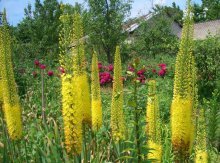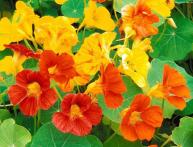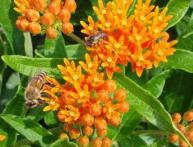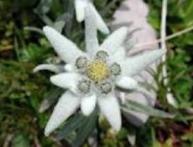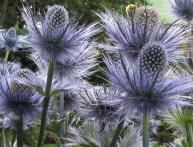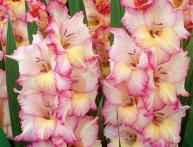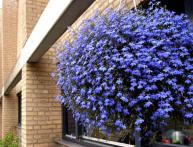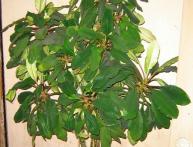The best flowers for the garden: perennials, their types and planting
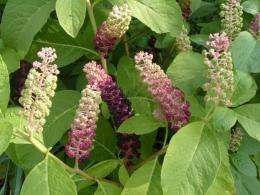
All gardeners dream that their plot will look aesthetically pleasing and attractive at any time of the year. To do this, they plant conifers, which remain green throughout the year. Shrubs and trees with brightly colored bark are also selected. In addition, you need various flowers for the garden. Perennials They are precisely those plants that will decorate the garden for several years in a row and do not require special care. Let's try to figure out which perennial flowers are best to plant in the garden.
Content:
- How to choose perennials for the garden
- Perennials blooming in spring
- Growing summer and autumn perennials
- Caring for perennials in the garden
How to choose perennials for the garden
Currently, all gardeners are faced with choosing plants for landscaping their plot. The modern assortment of perennial herbaceous plants is such that it is very difficult to settle on certain species and varieties. As a rule, all plot owners strive to ensure that the first flowers appear immediately from under the snow, and the last bloom until the snow itself.
From the point of view of flowering times, all garden perennials can be divided into groups:
- Blooming in spring, they bloom even when the snow is just melting and bloom until the end of the first ten days of May
- spring-summer, these bloom from mid-May and bloom until mid-June
- summer, flowering period from mid-June to mid-August
- autumn, bloom at the end of summer and bloom until frost
All these plants, depending on the time of flowering, have much in common both in preparation for landing, both in cultivation and care. For example, it is better to plant all the plants that bloom first in the fall, but summer and autumn perennials can be planted both in autumn and spring. All perennials that begin to bloom as soon as the snow melts have fairly modest sizes, dull and inconspicuous flowers.
But summer and autumn perennials are extremely diverse. Among them there are both miniature forms and tall plants. And the number of colors of flowers, shapes of inflorescences and leaves cannot be accurately counted. We will try to highlight the common features of plants in each group and understand how to grow them.
Perennials blooming in spring
The earliest perennials, as a rule, have low bushes and medium-sized flowers of white, light yellow or blue. They have a very short life cycle. In 6 - 8 weeks they manage to emerge from dormancy, grow the ground part, bloom, bear fruit and go into dormancy until next spring. A typical spring perennial is the snowdrop. The following species can be planted in the garden snowdrops:
- Elvis
- Caucasian
- snow-white
- Icarian
Despite the fact that spring perennials have many types, varieties and forms, they all have similar agricultural techniques. For snowdrops and all perennials that bloom in March - April, you need to choose well-lit areas and avoid heavily shaded areas.
The soil for snowdrops and all perennial primroses needs to be very fertile and permeable. Areas that are too dry or too wet are not suitable for spring flowers. Before planting, humus must be added.Sand is added to soils that are too heavy. The time for planting the earliest perennials does not have a clear deadline. Most of them can be planted in both spring and autumn.
Many of them can be planted in summer. This is due to the fact that planting material, such as bulbs, are small in size and cannot withstand long-term storage. It is advisable to choose species that do not require annual digging. They fall into a state of dormancy while in the ground, where they spend the winter. This is not only a snowdrop, but also:
- lily of the valley
- white flower
- Pushkinia
- anemone
- scillas
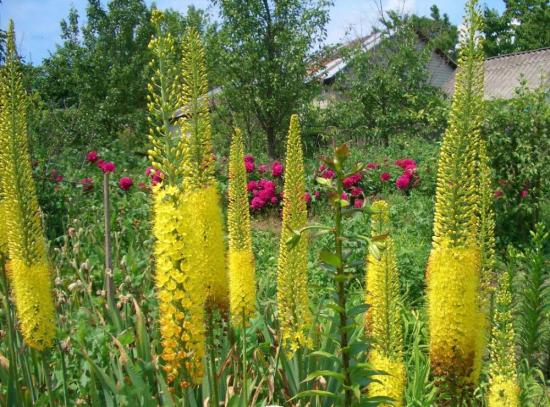
Most perennials that bloom in spring reproduce vegetatively. These are either bulbs or parts of rhizomes. They are planted in pre-dug and fertilized soil. A hole is made in it, commensurate with the size of the planting bulbs or other vegetative organs. Cover with a layer of earth on top.
It is also possible to grow through sowing seeds, but in this case, early flowering perennials will bloom only after 4 - 5 years. Self-seeding is sometimes observed. The disadvantage of spring perennials is the very short period of decorativeness and here one cannot do without plants that bloom in summer and autumn.
Growing summer and autumn perennials
Perennial flowers in the garden that bloom in summer and autumn are diverse. Among them are those that reproduce:
- seeds
- bulbs
- rhizomes
- tubers
- corms
Despite such diversity, we will try to outline those techniques that will be similar when planting and growing perennial flowers that bloom in summer and autumn. Most perennials grow well in sunny locations. Some of them tolerate partial shade.However, all of them are quite light-loving and almost always lose their decorative effect in strong shade.
Video about perennials in the garden:
Taking into account the fact that perennials grow without transplanting in one place for 5 - 10 years, you need not only to choose rich and fertile soils, but also to fertilize them additionally before planting.
How to plant perennials that bloom in summer and fall
The best time to plant perennials that bloom in summer and autumn and grown through seedlings is spring. Seedlings in open ground perennial Flowers are planted in late May - June, when the threat of frost has passed.
If vegetative parts or a divided bush are taken for propagation, then planting can be carried out in the fall, as a rule, this is done before the soil freezes. Planting is carried out in dug up and fertilized soil.
Holes are made in it in accordance with the size of the planting material. If planting is done in the spring, then after it the seedlings need watering and fertilizing immediately after rooting. In the future, the plants are cared for in the same way as all flowering and ornamental crops.
Caring for perennials in the garden
Removing weeds and loosening the soil
Regardless of the flowering period, perennial plantings must be weeded regularly. If this is not done, then weeds will not only hide all the beauty of perennial plants, but will also become a source of infection. To ensure air access to the underground parts of perennials, you need to regularly loosen the soil under them.
Watering and fertilizing
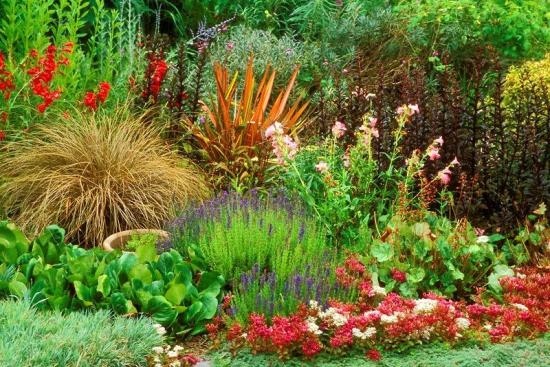
In order for summer and autumn flowers to delight the eye with bright colors, they must be watered regularly. As a rule, abundant watering once every three to four days is sufficient.If perennials are drought-resistant plants, then additional watering should be organized only in very dry summers. To obtain lush and long-lasting flowering, perennial flowers need to be fed once every 10 - 14 days.
It is most convenient to use liquid mineral and organic fertilizers. If you grow zoned varieties, then all preparation for winter comes down to pruning the ground parts and, if necessary, mulching the roots with a layer of peat or humus 5 - 7 cm thick. Perennial flowers require much less care than annuals, which is why they are loved by plot owners .

